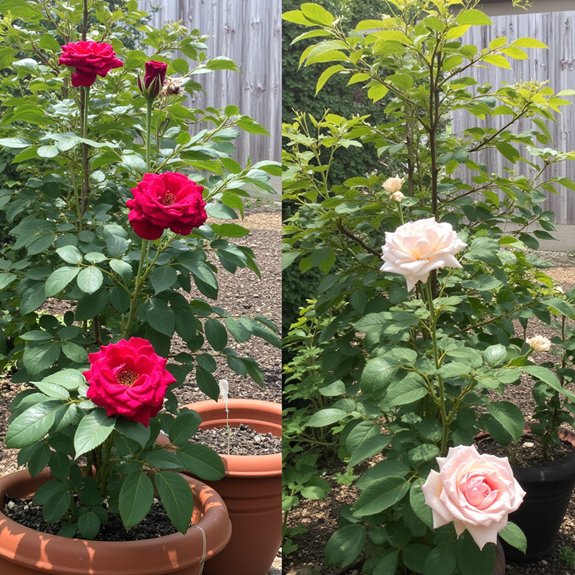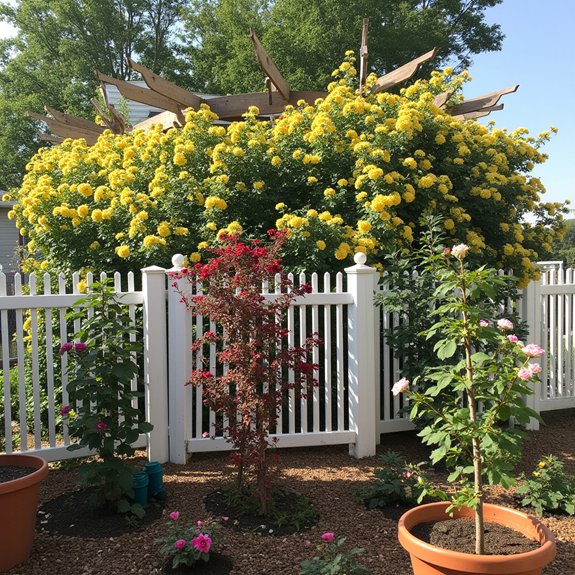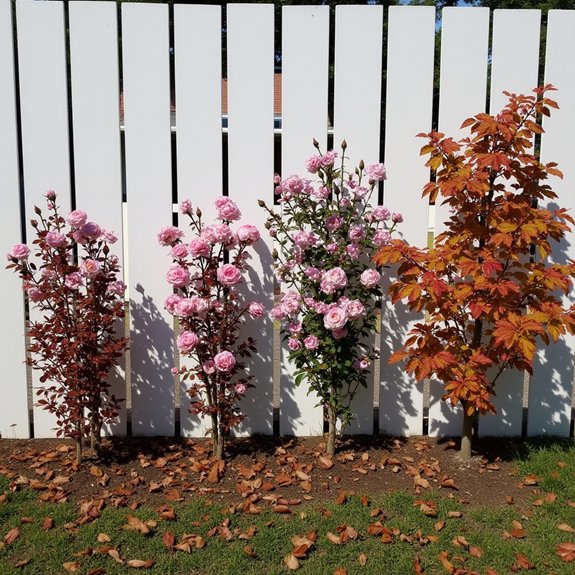Did you know that 73% of new gardeners abandon rose growing within two years because they choose high-maintenance varieties? You’re probably thinking roses require endless fussing, daily watering, and mysterious pruning rituals that only seasoned gardeners understand. The truth is, dozens of modern rose cultivars thrive with basic care, bloom repeatedly from spring through fall, and resist common diseases without chemical treatments. Once you discover which varieties actually work for beginners, everything changes.
Contents
- 1 Why Disease Resistance Matters Most for New Rose Gardeners
- 2 Understanding Sun Requirements and Garden Placement
- 3 Choosing the Right Rose Size for Your Space
- 4 Essential Care Tips That Actually Work
- 5 Seasonal Blooming Patterns and What to Expect
- 6 Container Growing for Small Spaces and Urban Gardens
- 7 Smart Companion Planting Strategies
- 8 Pruning Made Simple for Busy Gardeners
- 9 Top 14 Beginner-Friendly Rose Varieties
- 10 Creating Stunning Landscape Designs With Low-Maintenance Roses
Why Disease Resistance Matters Most for New Rose Gardeners

When you’re starting your rose garden, disease resistance should top your priority list above bloom color, fragrance, or even size. Disease resistance benefits include fewer fungal problems, reduced chemical treatments, and healthier plants that’ll thrive with minimal intervention. You’ll spend less time battling black spot, powdery mildew, and rust.
Choosing disease resistant varieties means checking nursery tags or online descriptions for specific resistance ratings. Look for roses labeled with terms like “disease resistant” or “low maintenance.” These varieties naturally fight off common rose ailments, making your gardening experience more enjoyable and successful from day one.
Understanding Sun Requirements and Garden Placement
Although most roses crave full sun, understanding your garden’s light patterns will determine which varieties thrive in your specific space. Full sun means six to eight hours of direct sunlight daily, while part shade tolerates four to six hours.
Walk your garden at different times, noting sunlight exposure throughout the day. Garden orientation matters greatly—south-facing areas receive maximum light, while north-facing spots stay cooler and shadier.
Some low-maintenance varieties, like Blush Noisette, actually prefer partial shade and poor soil conditions. Match your rose selection to your available light rather than forcing sun-loving varieties into dim corners.
Choosing the Right Rose Size for Your Space

Since roses range dramatically from compact 2-foot shrubs to towering 12-foot climbers, measuring your available space prevents costly mistakes and overcrowded gardens. Consider rose height when planning your layout, especially in small yards where a massive climber might overwhelm everything else.
Growth habits matter just as much as final size. Some varieties spread wide, others grow tall and narrow, while climbing roses need vertical support structures like arbors or fences.
For containers, choose compact varieties under four feet tall. Larger spaces can accommodate shrub roses reaching six to eight feet, creating stunning focal points without maintenance headaches.
Essential Care Tips That Actually Work
Three fundamental care practices separate thriving roses from struggling ones, and they’re simpler than most gardening guides suggest. First, master rose watering by soaking soil deeply once weekly rather than light daily sprinkles. Water at ground level, never on leaves, to prevent disease.
Second, embrace preventive pest management through weekly inspections. Check for aphids, spider mites, and black spot early when treatment’s easier. Companion planting with marigolds naturally deters harmful insects.
Third, fertilize monthly during growing season with balanced fertilizer. Stop feeding six weeks before first expected frost to help plants prepare for dormancy properly.
Seasonal Blooming Patterns and What to Expect

When you plant your first roses, expect blooming cycles that differ dramatically from other garden flowers. Most varieties deliver their first flush in late spring, typically May or June, depending on your zone.
Continuous bloomers like ‘The Fairy’ and ‘Easy Does It’ produce flowers every 5-7 weeks throughout summer. You’ll notice bloom frequency increases with regular deadheading and adequate water. Peak performance occurs during moderate temperatures, around 70-75°F.
Seasonal color intensity varies with weather conditions. Hot summers may fade blooms faster, while cool mornings enhance fragrance. Expect final flushes in early fall, often producing the season’s most vibrant colors before frost.
Container Growing for Small Spaces and Urban Gardens
Limited garden space doesn’t prevent you from enjoying beautiful roses throughout the growing season. Container choices matter greatly for urban aesthetics and plant health. Select pots at least 18 inches wide and deep to accommodate root systems properly. Compact varieties like Popcorn Drift and Citiscape Bordeaux thrive in containers, reaching 2-3 feet maximum height. You’ll need well-draining potting soil, not garden dirt, which compacts easily. Water container roses daily during hot weather, checking soil moisture with your finger. Place containers where they’ll receive 6-8 hours of sunlight. Group colorful annuals around rose containers for striking visual appeal.
Smart Companion Planting Strategies
Although roses create stunning focal points on their own, strategic companion planting transforms your garden into a cohesive, thriving ecosystem. You’ll want to select companion plant types that share similar water and sunlight requirements. Lavender, catmint, and salvia make excellent partners, requiring minimal care while attracting beneficial pollinators.
For aesthetic combinations, pair soft pink roses with purple clematis or white varieties with deep blue delphiniums. Low-growing companions like lamb’s ear provide silver foliage contrast. Plant perennials 18-24 inches from rose bases to prevent root competition. These partnerships create visual depth while supporting overall garden health through natural pest control.
Pruning Made Simple for Busy Gardeners
Since many beginner gardeners fear they’ll damage their roses, understanding basic pruning principles removes the mystery and builds confidence. You’ll need only two essential pruning tools: sharp bypass pruners and clean cloth for wiping blades between cuts.
Time your pruning for early spring, just before new growth appears. Remove dead, diseased, or damaged wood first, cutting back to healthy white pith. These simple pruning techniques involve making cuts at 45-degree angles, one-quarter inch above outward-facing buds.
Don’t overthink it—most low-maintenance roses forgive mistakes and bounce back quickly from overzealous trimming.
Top 14 Beginner-Friendly Rose Varieties
Fourteen exceptional rose varieties stand ready to transform your garden without the fuss and drama typically associated with these legendary flowers. These selections offer diverse rose fragrance varieties, from Julia Child’s buttery blooms to Bliss Parfuma’s intoxicating scent. Color selection tips include choosing Eden’s romantic pink-white combination or Miranda Lambert’s classic red appeal. The Fairy provides abundant small blooms, while Iceberg delivers snowy white flowers. Popcorn Drift spreads as ground cover, and Citiscape Bordeaux fits compact spaces perfectly. Each variety thrives in specific hardiness zones, ensuring you’ll find options suited to your climate and garden conditions.
Creating Stunning Landscape Designs With Low-Maintenance Roses
When you’re ready to transform your outdoor space, low-maintenance roses offer endless possibilities for creating breathtaking landscape designs that work beautifully year-round. You’ll achieve stunning landscape aesthetics by grouping roses with similar care requirements together, creating natural focal points throughout your garden.
Consider color harmony when selecting varieties—pair soft pinks with whites, or bold reds with yellows for dramatic contrast. Use climbing roses on arbors for vertical interest, while ground cover varieties like Popcorn Drift fill spaces between pathways. Compact roses work perfectly in mixed borders alongside perennials, extending your garden’s seasonal appeal effortlessly.
